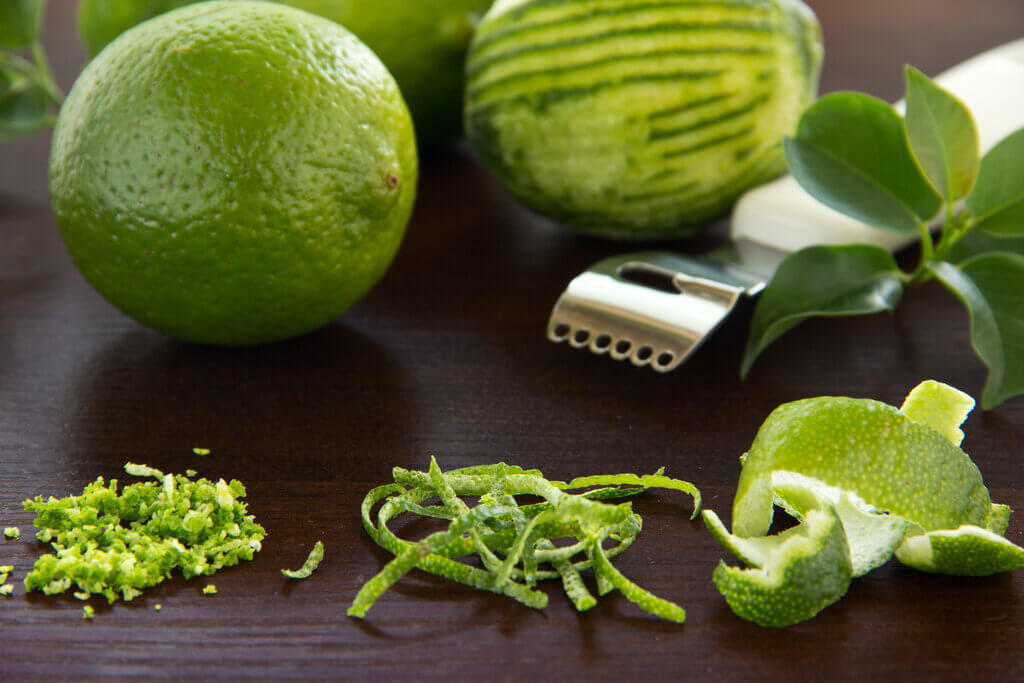
Isn’t it amazing how much flavor you get from the zest of limes? These little bits of fine grates used to be an overlooked part of limes, but now many chefs and even home cooks turn to them to add that extra bit of tanginess and freshness to their dishes.
From refreshing lime cocktails to desserts like a key lime cake, adding zest surely elevates food to another level. This article explores different methods on how to zest a lime complete with steps and tips. Read more and discover which works best for you with the tools you already have at home!
What Is Lime Zest?
Lime zest is essentially the green-colored exterior of the citrus peel. It is often grated finely to add refreshing notes of citrus and zing to recipes. When zesting, the green zest is always separated from the pith — the inner stringy and spongy white part of the peel — because of its bitter taste. Do note that lime zest is not the same as lime peel. Lime peel is both the zest and the pith.
Lime zest is not just a citrus powerhouse, it is also more concentrated than lime juice. On its own, lime juice can be tangy but its flavor can fade or get overpowered over time in dishes. That is why lime zest is used in place of lime juice for a stronger and longer-lasting citrus flavor. It can substitute for lime juice in dressings, desserts, and more. Additionally, the aromatic oils it releases are also great for cocktail drinks like a margarita.
How to Zest a Lime
There are many ways to zest a lime. With the use of different kitchen tools, you can get lime zest in various shapes and sizes. So, depending on how lime zest is needed in your recipe, test and see which of the methods below will work best for you!
Citrus Zester
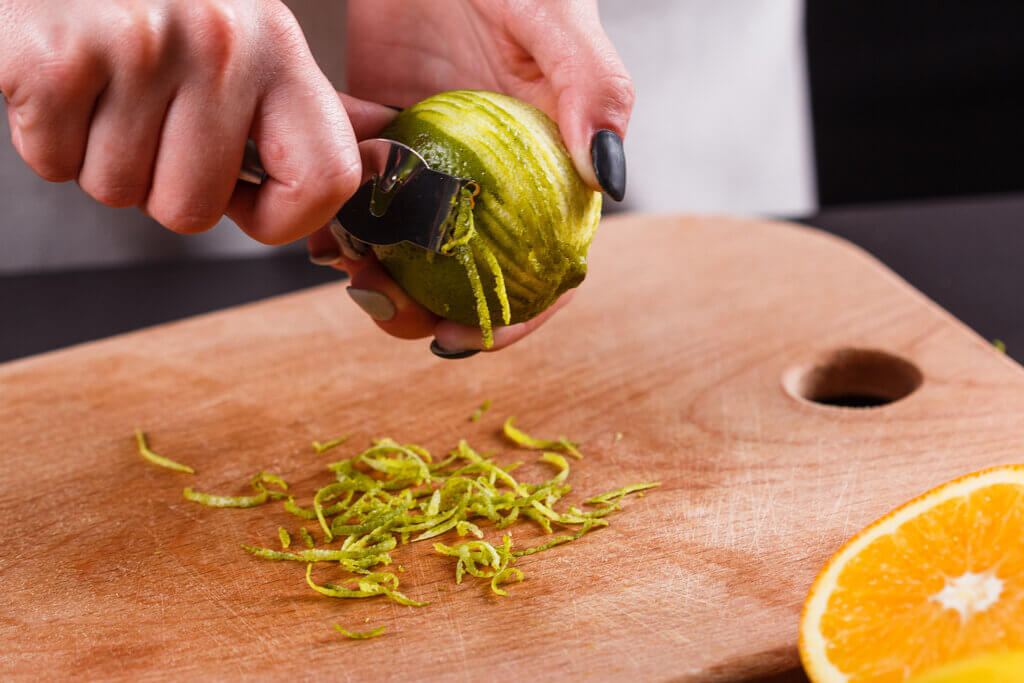
Of course, the first and most obvious tool is the citrus zester. Made specifically for this purpose, it typically has five small, sharp holes that are used to create long strands of zest from the citrus. A citrus zester is best used when you only require a few long strands of zest. Here are a few simple steps you can follow to efficiently extract lime zest with this tool:
- Hold your citrus firmly. – Depending on which position is more comfortable for you, you can either hold the lime in your hand or against a chopping board.
- Start at the top of the lime and pull down gently. – With just enough pressure, use the holes of the zester to scrape against the peels. You will get long thin strips, unlike other methods. This is great for cocktails and to garnish desserts. Some zester tools may also come with a channel knife that creates slightly thicker strips of zest.
- Clean and wash the lime. Remove any dirt or chemicals clinging to the citrus skin by simply rinsing and scrubbing the fruit under running water. Pat dry before zesting.
- Zest just before you need it instead of doing so ahead of time. Lime zest often hardens quickly if not used immediately.
Microplane
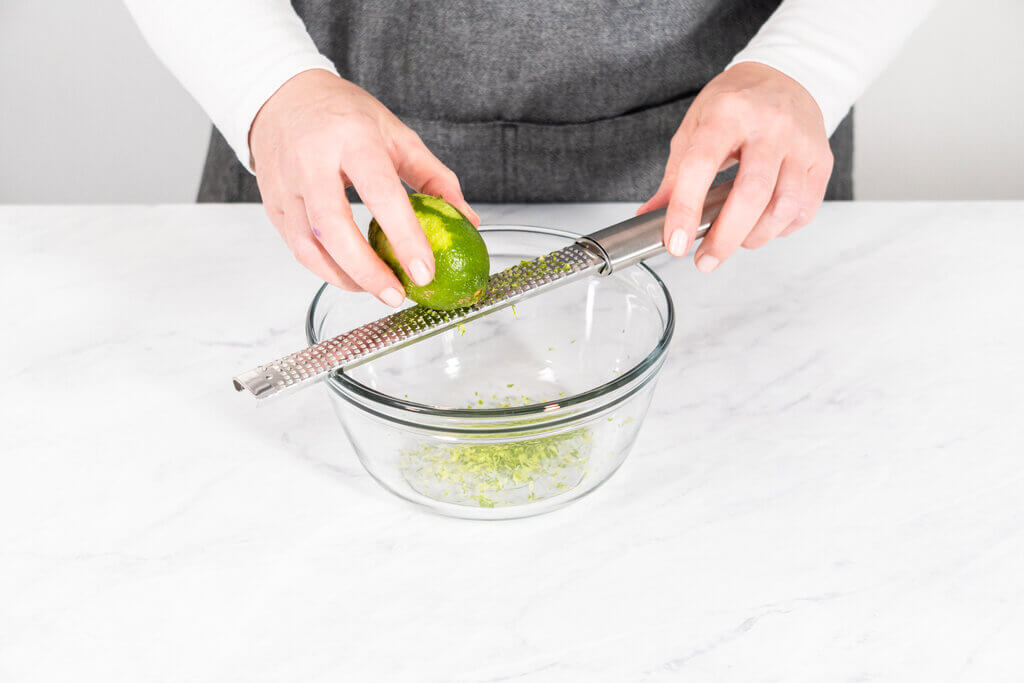
If your recipe calls for finely grated lime zest, then the best tool for the job is the Microplane. This handheld fine grater creates fine pieces of zest with its sharp and tiny holes. It is the ideal kitchen utensil for garnishing desserts or any dish that needs a quick zest.
- Position the Microplane. – For stable zesting, prop one end of the tool on a cutting board or any flat surface. Hold it at an angle. You can also hold it over a dish at an angle if you wish to directly garnish with the lime.
- Hold the citrus with your dominant hand. – Position the fruit starting from the part near the handle.
- Drag the lime in a sweeping motion. – Drag the fruit down the Microplane with just enough pressure. Zest until you start to see the pith. Keep rotating and turning the lime until you’ve zested enough to your liking.
- Give the Microplane a gentle tap. – Lime zest might stick to the back due to the moisture from its oils. Giving it a light tap on the surface or tapping the handle with the back of your palm will help dislodge the zest.
Grater
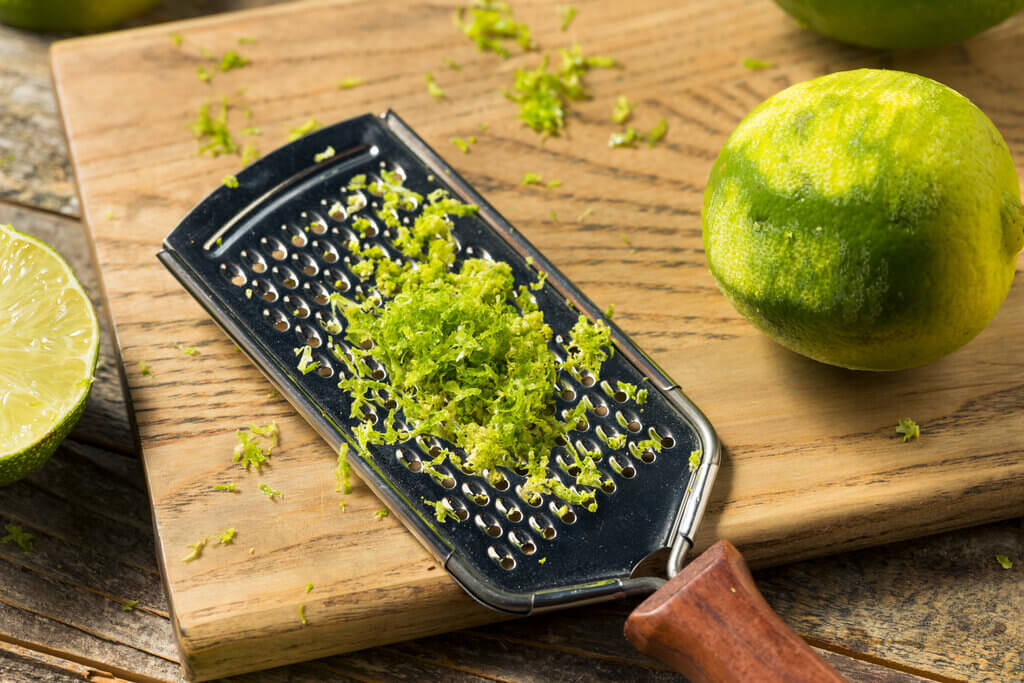
Like the Microplane, using a grater also works well in zesting limes. This common household tool serves many purposes and comes in different hole sizes.
For finer zest, be sure to use graters with smaller holes. If you have a box grater, it usually has varying hole sizes on opposite sides. This kitchen utensil works well for zesting in large quantities efficiently.
- Hold the grater in place. – When using a handheld grater, hold it at an angle similar to how you would a Microplane. However, if you’re using a box grater, you can simply prop it upright on a flat surface.
- Drag the lime from the top. – Push the fruit gently against the holes of the grater, just enough to remove the green part of the peel. Rotate the lime as you go until most of the peel is extracted.
- Give the grater a tap. – Release the zest that sticks to the grater with a simple tap. You can also use a spoon or spatula to scrape the insides of a box grater.
READ ALSO: 12 Best Cheese Graters For Cheese Lovers
Peeler or Paring Knife
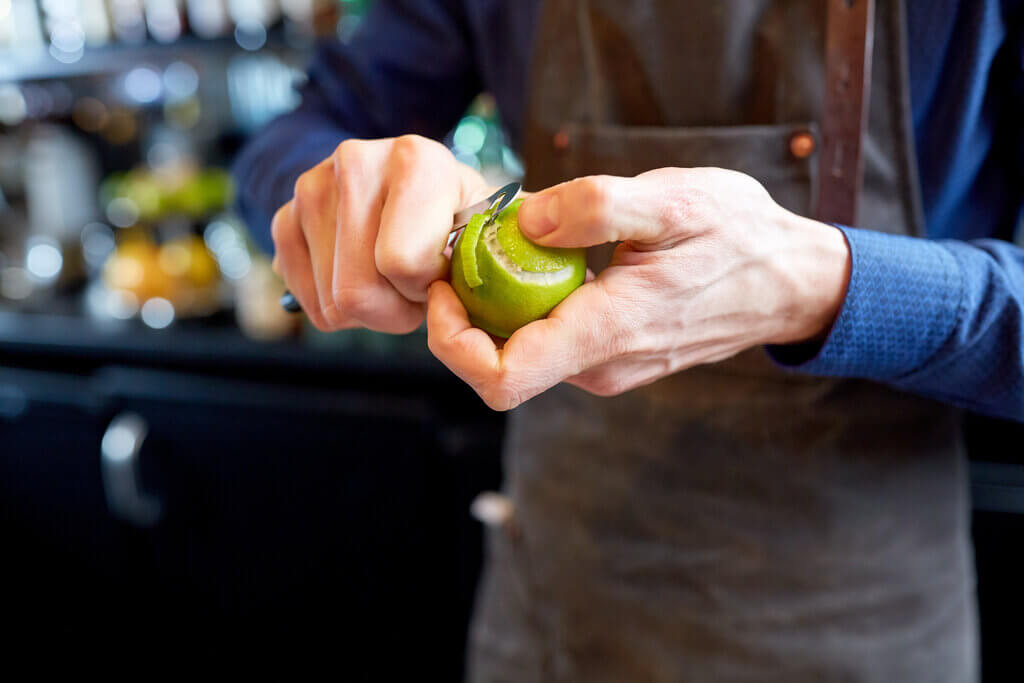
If you don’t have a citrus zester, you can absolutely use a handy peeler or paring knife from your kitchen. It would take a bit more time and effort but will work just fine, especially for decorative purposes.
This method creates thicker zest strips that can create various shapes that you like. If smaller pieces are necessary, you can slice them into thin strips and finely chop them. Here’s how to zest a lime without a zester:
- Carefully peel lime rinds. – With your peeler or paring knife, cut slices of only the green-colored part of the lime. Rotate the lime as you go and avoid the white bitter parts of the peel.
- Finely mince the zest strips. – Use your knife to make thin slices of the strips you peeled. Then, mince until the desired shape and texture.
- Use fresh limes that aren’t bruised or damaged for the best results.
- Always check if you’re over-zesting one part of the lime. Constantly rotate or turn your lime to avoid getting the bitter pith.
Lime Zest Substitutes
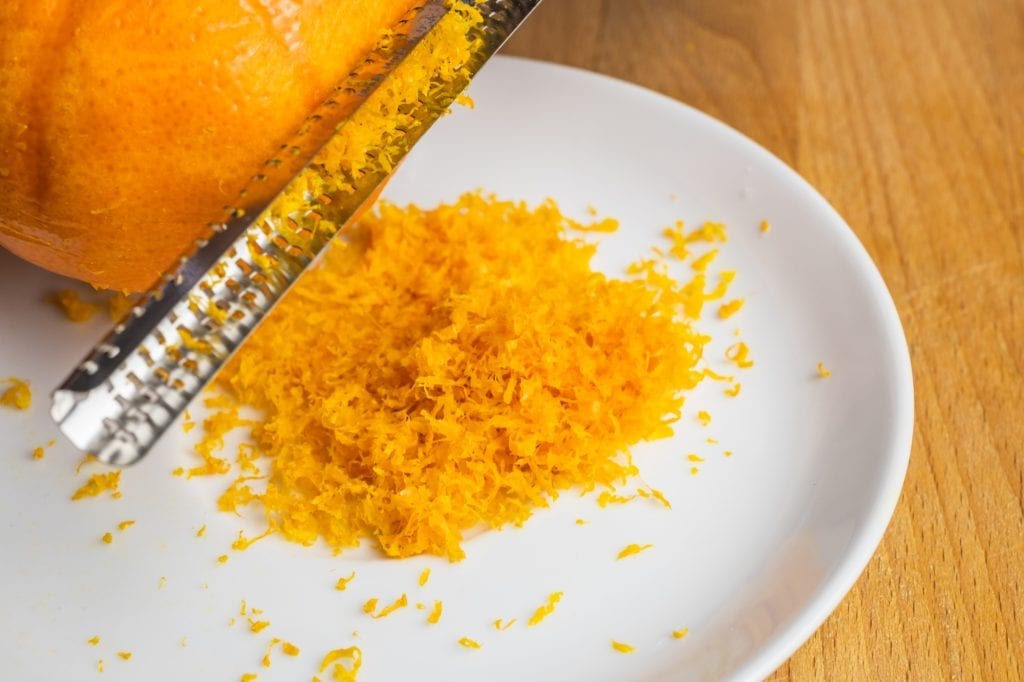
The zesty punch of this ingredient brightens your dish with its distinct citrus flavor. But what if you don’t have limes on hand? Worry not about your recipe being lackluster! These lime zest substitutes will still drizzle the same vibrance to your dish, though they won’t be an exact match in taste.
Use any of the ingredients below to replace 1 teaspoon of fresh lime zest:
- 1 teaspoon of lemon or orange zest
- 2 tablespoons of lime juice
- ½ teaspoon of lime extract
- ⅓ teaspoon of dried lime peel
READ ALSO: Orange Zest: How to Zest an Orange in 4 Easy Ways
Frequently Asked Questions
How much zest is in one lime?
This depends on the size of your limes and how thoroughly you zested the fruit. But typically, you get about 2 teaspoons of lime zest from a regular-sized lime. It also yields 2 tablespoons of lime juice.
How to store lime zest?
It’s best to zest your citrus just before you need it. Now, if you have some leftover zest or limes that you don’t need yet, store them in three different ways:
- Refrigerating – Storing them in the fridge in an air-tight container will help them last for about two to three days.
- Freezing – In a plastic bag or freezer-friendly containers, frozen lime zest can last for up to three months. They’re good to use for baking purposes, though take note of ice crystals when measuring.
- Drying – Dried lime zest can be stored for much longer with all your other spices. You can simply dry your own at home using a dehydrator.
Was this page helpful?
Read Next: How To Make Clear Ice at Home











